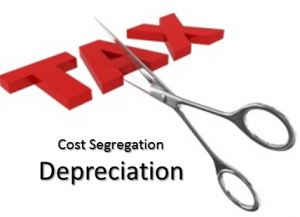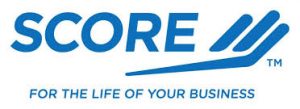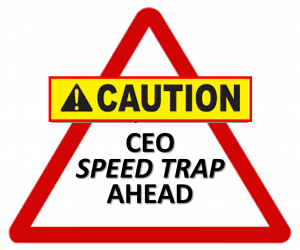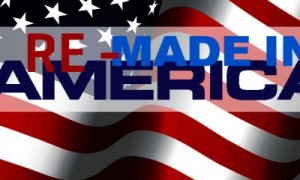By Rick Andrade – Nov 2017
For baseball pitchers it’s all in the wrist. For Tax Advisors it’s all in the code. And when it comes to real property depreciation policy and methods, we all know there’s an abundance of tax code.
And despite recent tax relief talk in Washington, one depreciation strategy is making a strong comeback. It’s an old method that reclassifies real estate assets from long term recovery periods to short term recovery periods (aka accelerated depreciation). It’s called Cost Segregation (CS) and it’s been around for a while but in an earlier incarnation called “component depreciation,” whereby an owner of a new commercial building or one making substantial improvements to existing commercial real estate can segregate specific real estate assets into separate depreciable component groups.
These subcomponent groups such as lighting, doors, floors, walls, etc. can then be depreciated individually over shorter lifetimes such as 5 years, rather than being lumped altogether with all building assets in a general bucket and depreciated over a much longer 39 year recovery period, under the current MACRS method.
The immediate benefit is increased after-tax cash flow, meaning that by adopting a CS depreciation expense strategy, your depreciation expense/ write-off is much higher, more front loaded, and thus reduces your business tax liability. Furthermore, new tax modification acts in 2001 & 2003 provided that if real property is reclassified from 39 yrs. to the shorter 5yr, 7yr, or 15yr periods, there is an additional bonus catch-up recovery provision which can further accelerate depreciation expense by 30% – 50%. Sounds good right?
So. If it’s more valuable and perfectly legal, why don’t more CPAs & Advisors use it?
Because most advisors simply don’t have the right detailed cost information for each component of a recently purchased building or accurate cost records for individual building components to do the job. While there are several CS methods that can be used to estimate component costs separately, risk-averse tax advisors still resist efforts to calculate the cash flow benefits. Rather they prefer any method that is least likely to get audited approach first. But this fear is likely overblown and misplaced.
Enter your Cost Segregation specialist firm. These consultancy firms, or CPA firms with add-on CS services, specialize in reviewing, and completing engineering studies, and component cost analysis using IRS rules of the road. Result? Once armed with a detailed Cost Segregation report, business owners who acquire real estate assets or make large building improvements can save as much as 5% in taxes on every $1 Million is real estate asset dollars deployed. Translated, a $10 million RE investment could provide as much as $500,000 in real tax savings! And those are hard dollars that can be put to better use elsewhere in your growing business.
So what exactly is Cost Segregation?
A Cost Segregation study is a detailed review and cost breakdown of a real estate investment allocated into four (4) key categories:
- Personal Property
- Land Improvements
- Building
- Land
Exactly which group a real property investment component falls into is where the rubber meets the road. In many cases after a building is acquired in an M&A transaction for example, the CPA will use a current appraisal, or worse, allocate 20% to land and 80% to building and fixtures as an old general rule. Land has no depreciation expense value, and the building overall has a 39 year straight-line recovery period under MACRS. This approach offers no accelerated tax relief because it does not attempt to isolate and identify the costs of building components separately. The 80/20 grouping also fails to specifically identify and therefore write-off any specific cost for major replacement components such as a roof, loading dock, electrical stations, removable HVAC systems, and dozens more areas.
A better way is to first see if a cost segregation study will save you enough tax money to justify the cost of the CS report, which can range in price for middle market companies from $5,000- $15,000 or more according to KBKG a tax advisory firm to CPAs. And to figure that out, the CS examiner will re-allocate your purchase price or cost of improvement into these four buckets and then compare your current depreciation method to the cost segregation results. Experts say the more detailed a real estate asset can be broken down into its individual cost components the more likely a cost segregation study will pay off.
Who Gains the Most by Using CS?
Acquirers of existing commercial real estate and new construction benefit the most because they have the benefit of conducting a new CS upon acquisition, or by gathering the most accurate cost information documents while new construction or improvement work is being completed. The IRS will disallow a cost study based on older construction or engineering documents that don’t accurately link construction costs to component costs according to a Rutgers University analysis.
Done right, that is, using the IRS Audit Techniques Guide for Cost Segregation, however, high tax bracket real estate business owners can potentially save as much as 5% in taxes for every $1 Million invested in a real estate purchase or development. The actual savings are based on which tax rate bracket the owner falls into, and the amount of depreciation expense benefit when compared to other depreciation methods. In most cases the higher the tax rate… the higher the CS savings.
The real trick is to justify which cost components fall into which of the four key groups above.
For example, typical building component groupings include items such as hand rails, wall or floor coverings, light fixtures, plumbing, electrical and HVAC systems with a 39 year life. However, a proper CS study can potentially group all of these building assets into a much shorter depreciable life, including moving assets from 39 years to just 5 years.
For example, in the 1997 landmark case Hospital Corporation of American v. Tax Commissioner, the tax court held that HCA could re-allocate dozens on 39 yr. life building component-assets down to 5 yrs. including:
- Primary & secondary electrical systems
- Lab & maintenance shop wiring including conduit boxes
- Carpeting & wall coverings
- Special plumbing installations
- Kitchen hoods & exhaust
- Patient handrails
- Accordion doors & partitions
Other overlooked examples that can qualify for 5yr depreciation include: signs, security systems, un-affixed cabinetry, fire suppression, accent lighting and dozens of others.
Warnings, Pros & Cons
The advantages of CS are clear: lower taxes, more after tax free cash flow, identifiable asset write-offs, bonus depreciation options, and a host of other benefits according to Ernst & Morris, a Georgia-based Cost Segregation consultancy firm.
The disadvantages include the risk of having to recapture the advanced depreciation tax savings if you dispose of the real estate within a few years after your investment. A second risk is conducting a poor CS report that fails to effectively link building and land improvement components to their cost documents. And lastly, being too aggressive in re-classifying assets as tangible personal property vs structural components (inherently permanent as affixed to the building), can raise a red flag. Speak with your advisor about all the risks.
Conclusion
Nevertheless, in many cases the overlooked CS study approach is definitely worth a closer look for business owners, or private equity investment firms who own or plan to own commercial real estate.
Properties either recently acquired or improved in excess of $1 million may well benefit from a CS study. There are many Cost Segregation advisory firms you can find online. Once you find one you like, ask for a free upfront review of the numbers that compares depreciation strategies. Each firm should also provide an estimate of the CS study cost/benefit, timeline, and discuss the methods they use to complete the study.
Finally, at the end of the day, if you see yourself making a large real estate investment in the coming months… consider doing a CS study. You might find the time & benefits of having more free cash-flow upfront to kick start or reboot your real estate investment easily out-weighs the cost.
Make sense?
About the author: Rick Andrade is an investment banker at Janas Associates in Pasadena, Ca and finance writer in Los Angeles helping CEOs buy, sell and finance middle market companies. Rick has earned his BA and MBA from UCLA along with his Series 7, 63 & 79 FINRA securities licenses. He is also a Real Estate Broker, a volunteer SBA/SCORE instructor, and blogs at www.RickAndrade.com on issues important to middle market business owners. He can be reached at RJA@JanasCorp.com. This article is for informational purposes only and should not be considered in any way an offer to buy or s










